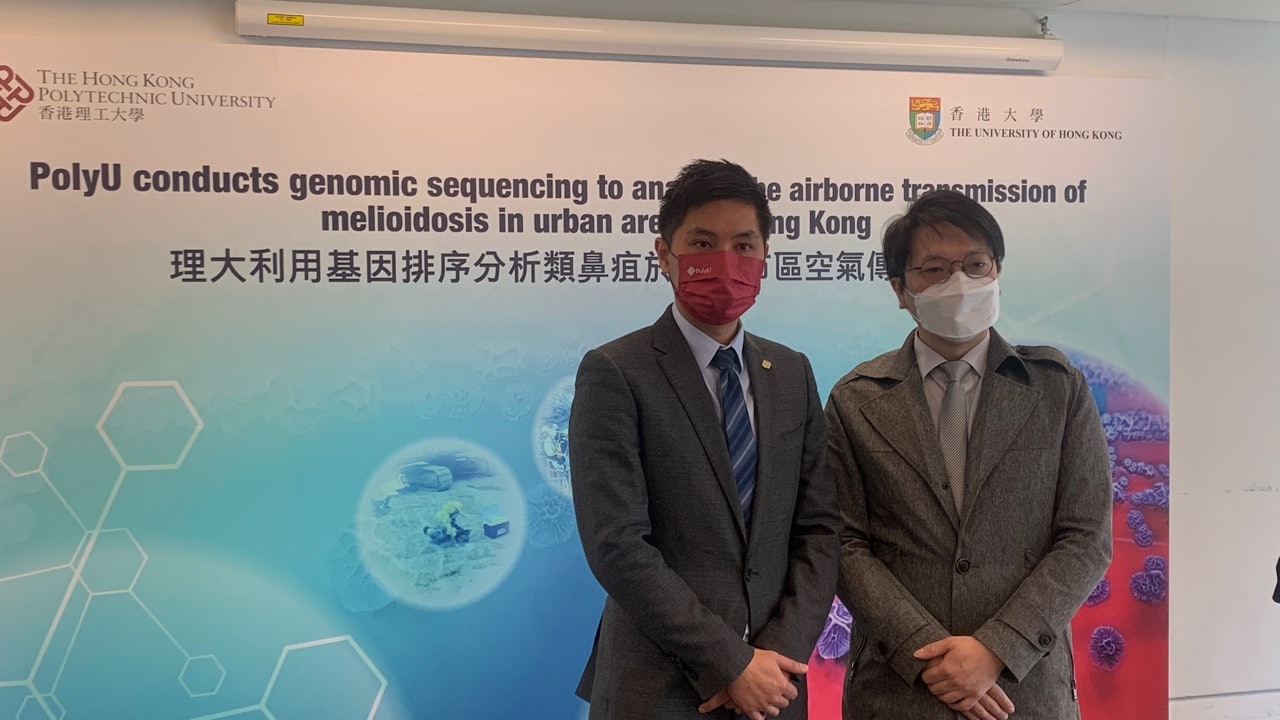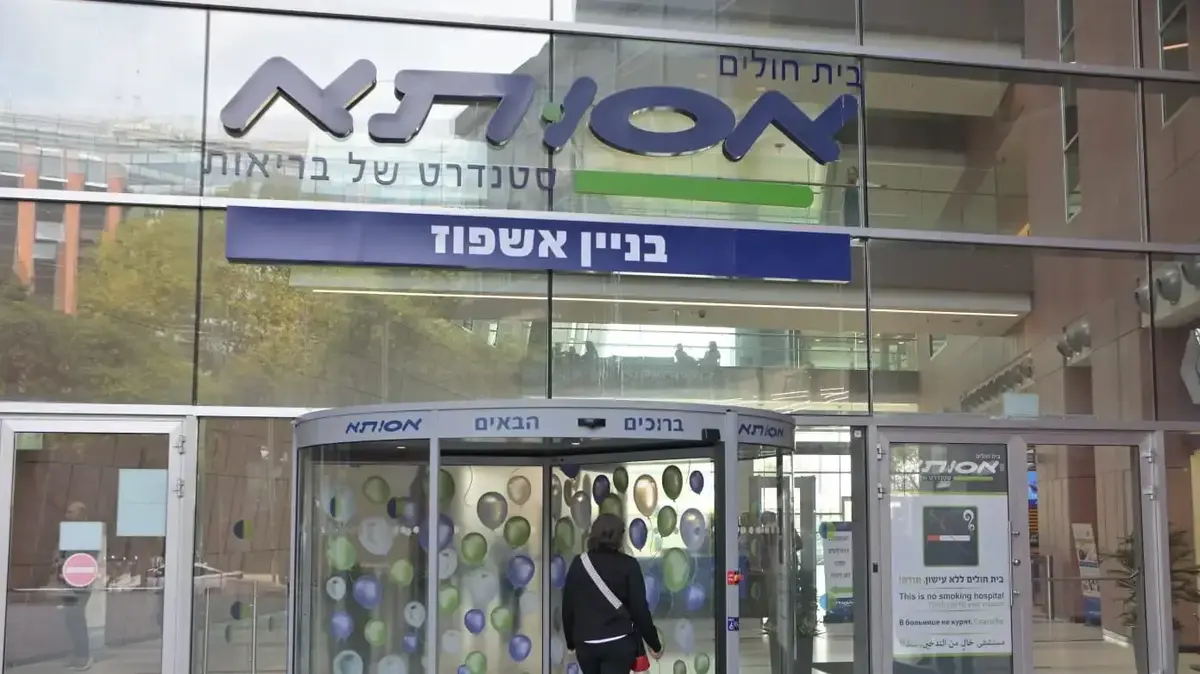A total of 43 cases of melioidosis have been reported in Hong Kong so far this year, including 27 cases recorded in Sham Shui Po District since August.
Research by the Polytechnic University and the School of Public Health, Li Ka Shing Faculty of Medicine, The University of Hong Kong has confirmed for the first time that Burkholderia pseudomallei can survive in the air after a typhoon. It is believed that inhalational infection is the transmission route of melioidosis in Sham Shui Po District.
After genome sequencing and comparison, the team found that a new strain "ST-1996" appeared in Hong Kong. This strain has 5 Hong Kong monophyletic groups, which means that there may be at least 5 independent transmissions in Hong Kong. The proportion of Burkholderia was 3%, and that of Shek Kip Mei Park was 0.6%. The team believed that the melioidosis was concentrated in the Shek Kip Mei area.
Analysis of 38 cases from 2015 to October this year, the fatality rate was 26.3%
The research team of PolyU and the Faculty of Medicine of the University of Hong Kong analyzed 38 cases of melioidosis diagnosed in the Kowloon West Cluster Hospital from January 2015 to October this year. The median age of the patients was 68.5 years old, 84.2% of them were male, and 71.1% of the patients were immunosuppressed.
In addition, most patients developed pneumonia, up to 63.2%, and 78.9% of patients developed bacteremia.
The median time from symptom onset to diagnosis is 9 days, up to 70 days, and the overall case fatality rate is 26.3%.
Similar to other infectious diseases, medical delays push up the death rate
Xiao Jiehang, an associate professor of the Department of Medical Technology and Informatics at PolyU, pointed out that because melioid bacteria are not common, general laboratories do not have special procedures for diagnosis, and it is difficult to diagnose patients with melioidosis, resulting in a high mortality rate: "Many deaths are due to delayed diagnosis. Because her symptoms are very similar to other infectious diseases, very similar to general pneumonia, the whole treatment is very complicated."
The team found through environmental surveys that melioid infection in Hong Kong has obvious seasonality, and melioid infection cases are more common after typhoons and heavy rains; and 78.9% of the patients live in Sham Shui Po District.
From August to October this year, the team collected 20 air samples in the Sham Shui Po District. On the fifth day after Typhoon Mulan hit Hong Kong, an air sample was collected near the tenth phase of the Baitian Village Redevelopment Project with a lot of soil. Burkholderia pseudomallei was discovered, and it was confirmed for the first time that there will be viable Burkholderia pseudomallei in the air after a typhoon.
A new strain "ST-1996" was discovered in Hong Kong
Xiao Jiehang pointed out that both clinical evidence and molecular epidemiology support aspiration infection as the transmission route of melioidosis in Sham Shui Po District.
PolyU conducted genome-wide sequencing and comparison of 38 melioid cases in West Kowloon and air samples from Pak Tin Village, confirming that the air samples from Pak Tin Village and the case in Sham Shui Po District are genetically similar and belong to a new strain "ST-1996", which is unique to Hong Kong strain.
There may be at least 5 independent transmission clusters in Hong Kong
Lin Zanyu, an associate professor at the School of Public Health of the University of Hong Kong's Faculty of Medicine, pointed out that the School of Medicine compared the genomes of the Kowloon West case strains with melioidosis in other parts of the world, and found that there were 5 Hong Kong monophyletic groups in the genetic relationship tree constructed by the core genes, which means that There may be at least 5 independent transmissions in Hong Kong.
▼On October 21, Yuan Guoyong and Zhang Zhujun went to Baitian Village, Sham Shui Po to investigate the melioidosis epidemic▼
+3
Xiao Jieheng said that since "ST-1996" already existed in Sham Shui Po District in 2016, and the construction of the tenth phase of the Baitian Village Redevelopment Project had not started at that time, it is believed that this place was not the earliest source.
Therefore, the team conducted investigations in the suburbs near the site, including Garden Three and Shek Kip Mei Park, collected 48 shallow soil samples and 17 sewage samples, and found no Burkholderia pseudomallei. The sewage samples were all negative, but a total of Eleven soil samples tested positive for nucleic acid.
The proportion of Burkholderia pseudomallei in Garden Hill was 3%; the proportion in Shek Kip Mei Park was 0.6%, which means that Burkholderia pseudomallei once existed in the two places, regardless of the environment and the number of patients, they were concentrated in the Shek Kip Mei area.
PolyU Siu Kit-hang: Melioid cases will increase next year
Xiao Jieheng continued to point out that since 2016, the urban vegetation in Sham Shui Po District has continued to decrease. When there is heavy rain, the melioid fungus will move from the deep soil to the surface. The loose soil is easy to aerosolize under strong winds, and is further dispersed by strong winds during typhoons. .
He predicted that the number of melioidosis cases would increase next year, and believed that increasing green areas would help reduce the spread. He also suggested that citizens who live near hillsides should keep their windows closed for a few days after the typhoon.
Melioidosis︱A 69-year-old woman living in Sham Shui Po suffers from the epidemic and suffers from various long-term diseases. She is currently in hospital and her condition is stable. Melioidosis|Four more cases were confirmed, all of whom live in Sham Shui Po. One person is in serious condition. The center: not newly infected with melioidosis|A 70-year-old woman in Sham Shui Po who was infected with the disease was diagnosed in September The same source of infection with melioid is not ruled out|The water sample is negative and the transmission route has not been determined Yuan Guoyong: The infection of endemic disease materials has increased









/cloudfront-eu-central-1.images.arcpublishing.com/prisa/KMEYMJKESBAZBE4MRBAM4TGHIQ.jpg)


